Day 48. What is there to say that hasn’t been said? Nothing new has happened here, other than we’ve taken in a stray…. A friend of Henry’s suddenly found herself with a day’s notice at the end of April that she couldn’t stay where she’s been staying. She’s been renting a small bedroom in a small apartment and staying there with the person who owns the apartment, they’ve both been staying in, quarantining together, but for a variety of reasons, the apartment owner decided to toss this young woman into the street with basically no notice. We talked about it and decided that we’d take the risk, given that she’s been staying in and isolated, and so we are now three in the apartment – until she finds another place or the end of May, whichever comes first. She’s strictly vegan – she’s making her own food. Those were my conditions. We shall see how this goes.
One of my favorite Chinese vegetable dishes is stir-fried chinese/napa cabbage. Here, called, variously, akusai, akusay, or hakusay, these days it’s readily available at many local markets, sometimes even in the supermarket, so we don’t have to run off to China or Korea town to buy it as we used to. There are a variety of ways to prepare it – usually it’s cooked with either a mushroom or oyster sauce, it often includes a little bit of carrot or bell pepper for color, though not always, as you can see, and shrimp, in one form or another is a common addition. Many recipes used dried shrimp, some use fresh. Over time I’ve come up with a version that I like that isn’t particularly traditional, but at the same time, would probably be recognizable to anyone who enjoys the dish.
So, here we have a small akusai chopped up, washed and drained. A peeled carrot, thinly sliced. In the bowl, some shrimp. Now, normally I make this with fresh shrimp, split and deveined, and marinate them in a mix of a spoonful each of sesame oil, soy sauce, and chinese wine, with a good pinch of salt and white pepper. Unfortunately, all we had available locally this week were frozen, parcooked shrimp, so I thawed them, split them, deveined them (a pet peeve of mine and many chefs, shrimp or prawns that still have the “poop chute” in them after cooking), and then marinated them in the same. This just skips what would have been the next step, which would have been, after marinating for about an hour, I’d have quickly sauteed them in the skillet and then set them aside and moved on to the next step using the same pan.
Also, a couple of cloves of chopped garlic, the same amount of chopped ginger, and a chopped scallion. In the lower left, I made a bit of a mushroom stock – about a cup of water with some chinese dried mushrooms in it, brought to a simmer for a few minutes, then left to cool. Strained it into the cup, and finely chopped the rehydrated mushrooms. To the stock, I added a dollop of oyster sauce. And last, a couple of tablespoons of chinese wine with some cornstarch dissolved in it.
Vegetarian/vegan version – leave out the oyster sauce and replace it with Chinese mushroom sauce, or just use the mushroom stock. And replace the shrimp with halved button or other mushrooms, or some diced tofu, seitan, or tempeh.
In a couple of tablespoons of oil, over high heat, saute the garlic, ginger, and green onion for about a minute to get nice and fragrant. Again, if I was using fresh shrimp or prawns, I’d have sauteed them first, scooped them out, and set them aside, and then sauteed these “aromats” in the same oil.
Add the carrots and saute another minute to start to soften them.
Add the cabbage and saute it for about two minutes, to start cooking it down.
Add the mushroom stock with oyster sauce, mix well, cover the pan, turn the heat down low, and cook for about ten minutes. If you like your cabbage a little bit firmer, only cook for about five minutes. It’s personal preference.
It will look like this.
Add in the shrimp along with their marinade, and the cornstarch and wine slurry (you’ll have to mix it up again, the starch settles out). Turn the heat back up to high to reheat the shrimp and boil the sauce so it thickens with the cornstarch.
And, serve with white rice.
Which, by the way, gives me an idea for a next post. This came up last week when talking to a friend who was lamenting that it took him years to learn to cook rice well. It seems like such an easy thing, but doing it “right” is difficult. In Asian restaurants, apprentices sometimes spend months or years learning to prepare rice exactly the right way. Do you rinse or not rinse? Do you steam, boil, simmer, or something else? Do you use a rice cooker? What kind of rice do you use? Do you season it or just let the rice shine by itself?
So, next post, one method. The “Peruvian” method. Though it’s probably not Peru-wide. It’s the way Henry and his family from northern Peru cook their rice. How widespread it is, I don’t know. What I do know is that it comes out “perfect” every time. It’s very different from Chinese or Japanese or Korean or… etc… white rice. Look for the post to come in the next day or two, give it a try, and let me know what you think.
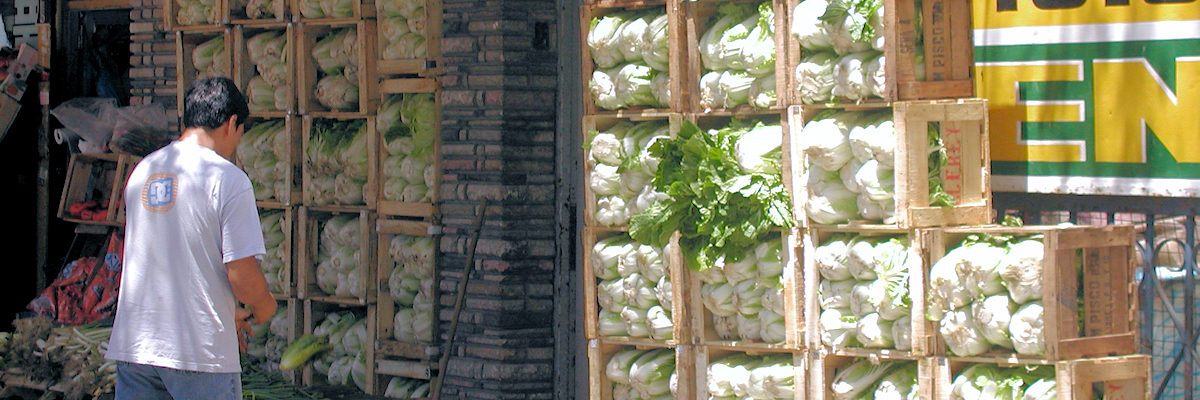
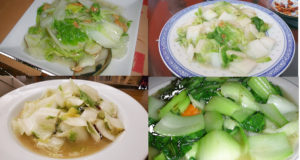
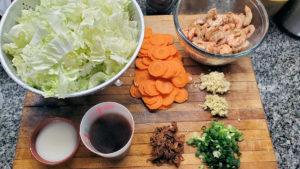
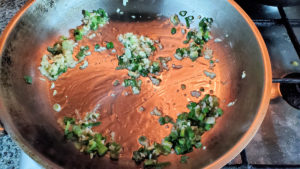
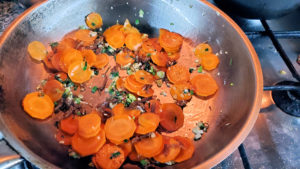
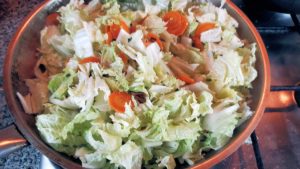
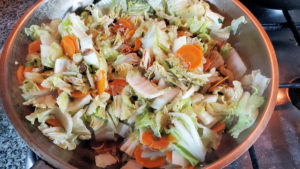
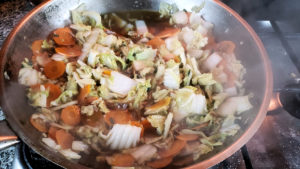
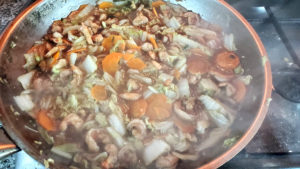
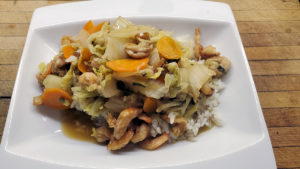
Super, can’t wait for your Peruvian rice recipe. I try cooking rice in a variety of ways and agree it’s deceivingly simple sounding to do well.
Good luck with your new house guest!